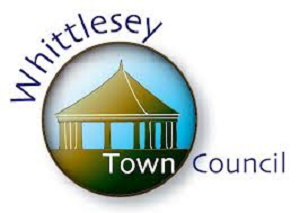Whittlesey appears in the Cartularium Saxonicum (Anglo Saxon Charters) spelt Witlesig in 973
Over the years it has had various spelling, Whittlesea and Whittlesey. Only the Railway Station retains the Whittlesea spelling now which can cause some confusion with travellers.
In 2011 Whittlesey and nearby villages had a population of 16,058 and is situated approximately seven miles east of Peterborough on the A605.
The town is surrounded by arable land growing crops such as wheat, potatoes, broad beans, and sweet corn. Apart from farming and brick making most of the employment is in Peterborough.
The Butter Cross built in 1680 is an ancient, listed building and dominates the market square. It was built to give protection to sellers of dairy goods and is surrounded by many buildings of interest in the conservation area.
The market square holds a weekly market and is the venue for many activities during the year.
The Nene Washes to the north of the town is an area of open land created because of draining in the 17th and 18th centuries. The land serves as a flood plain and frequently floods during the winter. The combination of grassland and wetland is ideal for wildfowl and is an area of natural interest and an RSPB Nature Reserve. It is an excellent spot to watch birds of prey such as Marsh Harriers, Hen Harriers and Peregrines.
The river Nene is ideal for fishing.
The flat landscape around Whittlesey leads to ‘Big’ skies and splendid sunsets.
There are Nature reserves both east and west of the town, plenty of public footpaths and cycle routes.
Whittlesey, which was an island, surrounded by marshy fen has a long history, from Bronze Age settlers constructing timber causeways and Romans building raised gravel roads. Some of the street names still have a Danish influence.
When the surrounding area was drained in medieval times the land was put to arable use.
The Lower Oxford clay to the west of the town made this a major area for brick production in the early 19c.
Many fossils have been found in this area. Remains such as Mammoth tusks and teeth, a Woolly Rhinoceros leg bone, Bison vertebrae and fossils of plesiosaurs and ichthyosaurs.
Recently discovered, Must farm, is a very important late Bronze Age settlement.
The presence of timber piles on the edge of the disused Must Farm Quarry Pit was first observed in 1999 by local archaeologist Martin Redding. During subsequent visits he retrieved later prehistoric potsherds, worked flint and metalwork from exposed sediment around the piles. This eventually led to an open-air excavation unearthing this most impressive site described as ‘Britain’s Pompeii’.
Many Roman artefacts have also been found and part of the Roman Causeway runs through the area.
The Whittlesea Railway station is to the south east of the town.
The town also has a Leisure complex and swimming pool, A library/Information centre and museum.
In January, the town comes alive with The Straw Bear festival. A tradition was revised in 1980 by Brian Kell of parading a man, covered in straw, around the town followed by many dance sides. This brings hundreds of visitors to the town who stay over the weekend to watch the Bear and colourfully dressed followers.

















